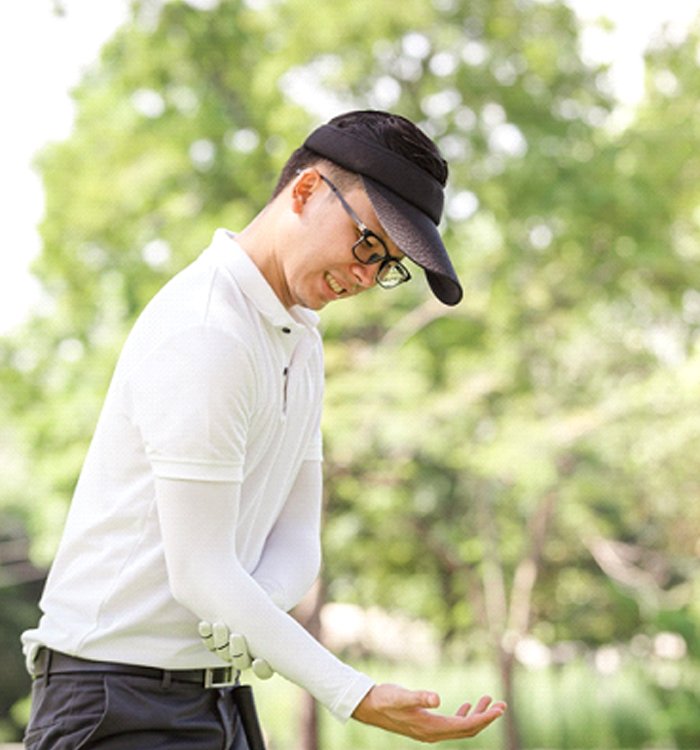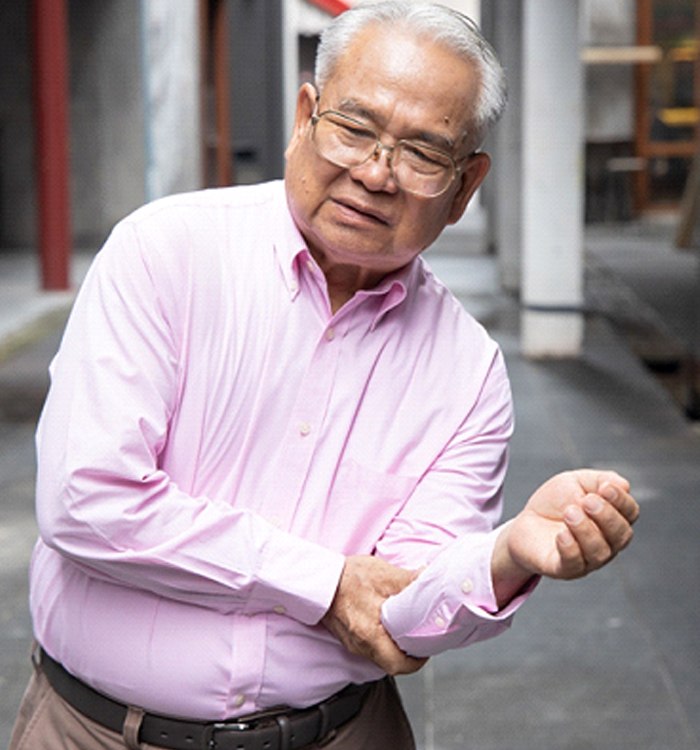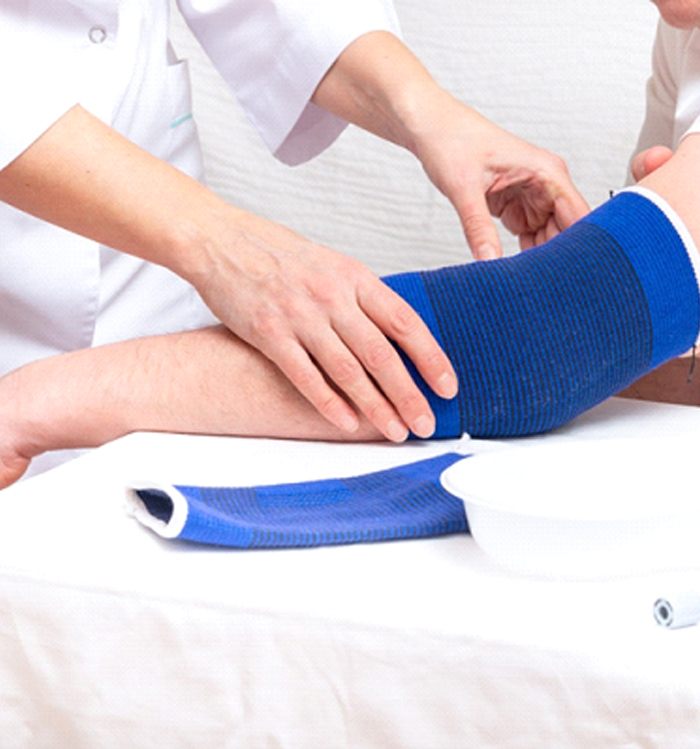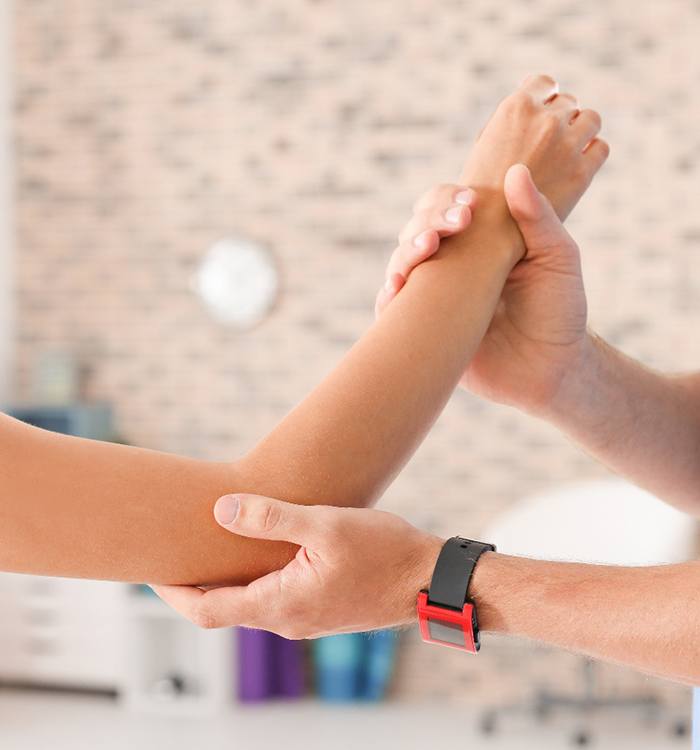
Golfer’s Elbow—Ashville, NC
Lasting Solutions for Chronic Elbow Pain
Epicondylitis, better known as Golfer’s Elbow, is a type of tendinitis that causes pain felt in the outer, bony part of the elbow. It usually stems from damage in the tendons of the wrists and hands, and despite the name, it doesn’t just affect golfers. Injury or repetitive motion can result in these symptoms, such as those used in racket sports or construction/assembly line work. If you’re experiencing persistent elbow pain, Dr. Pinkston is ready to help you figure out why and provide non-invasive treatments to make your discomfort go and stay away.Top of Form
What Are the Symptoms of Golfer’s Elbow?

In addition to pain and stiffness, the most common symptoms of Golfer’s elbow include tenderness and weakness. People dealing with the condition may experience issues with their grip and drop items more often. Some develop numbness and tingling as well, which can radiate into the fingers. It’s also possible for the area to become swollen and noticeably deformed. Often, the pain will be at its peak after an activity that involves moving the wrist and hands for an extended period of time.
How is Golfer’s Elbow Diagnosed?

Dr. Pinkston will start by asking you about your symptoms, such as when you started feeling them, and then he will give you an exam. In addition to a physical evaluation, he may also take some X-rays and use ultrasound to find the underlying source of the problem. Based on his observations, he’ll be able to recommend the appropriate treatment to stop your pain and restore your joint’s mobility.
How Can Golfer’s Elbow Be Treated?

Thankfully, there are many conservative methods that are proven to be effective at treating Golfer’s elbow, such as rest, physical therapy, bracing, and activity modification. If these fail to provide the relief you need, or if you want to accelerate the healing process, Dr. Pinkston may recommend regenerative medicine, such as PRP, prolotherapy, or biologic cell therapy. All of these consist of injecting a therapeutic substance into the elbow that will stimulate and focus the body’s healing ability, helping the distressed tendons repair themselves more quickly. And, thanks to the use of ultrasound, Dr. Pinkston can ensure that the treatment is being applied exactly where it will be most effective.
Whether you’re an avid golfer or not, Golfer’s elbow can be a serious obstacle in your daily life, but it doesn’t have to be. To start getting answers and the solutions you need for your elbow pain, contact Dr. Pinkston today.
What Conditions Can Be Mistaken for Golfer’s Elbow?

There are many conditions that can cause chronic elbow pain, and Golfer’s Elbow is just one of them. As such, we have many patients come into our office who believe they are suffering from Golfer’s Elbow, but they are actually dealing with another issue. This is why Dr. Pinkston will ask you about your symptoms and perform a detailed exam involving X-rays and diagnostic ultrasound before giving you a diagnosis. A few of the most common musculoskeletal problems that can be mistaken for Golfer’s Elbow include:
Tennis Elbow
While their names are similar, Golfer’s Elbow and Tennis Elbow are very distinct conditions. The main thing that separates them is that Golfer’s Elbow causes pain that is felt on the inner bony part of the joint, while Tennis Elbow affects the outer part. The reason a person develops one instead of the other depends on which muscles/tendons in the forearm have become injured or inflamed.
Carpal Tunnel Syndrome
The main symptoms of Carpal Tunnel Syndrome are pain and numbness in the wrist that can radiate into the fingers and thumb, and this is because the median nerve is being compressed by the muscles in the wrist. Left untreated, the nerve can begin to suffer even more damage. The median nerve runs the entire length of the arm, so a person may eventually begin to feel discomfort in the forearm and elbow region even though the problem originated much lower.
Osteoarthritis
Every joint in your body relies on cartilage to function properly, and with osteoarthritis, that cartilage slowly starts to deteriorate. This causes friction between the bones, muscles, tendons, and nerves that make up the joint, leading to pain and stiffness. It is possible for OA to occur in the elbow, and the symptoms can sometimes mimic Golfer’s Elbow, even though the root cause of the conditions is quite different.
Golfer’s Elbow FAQs
What Is the Difference Between Tennis Elbow and Golfer’s Elbow?
Your elbow has two bony bumps that are called epicondyles. They serve as attachment points for the tendons in your forearm. The medial epicondyle sits on the inner surface on the elbow, while the lateral epicondyle is located on the outer surface.
Both tennis elbow and golfer’s elbow are forms of epicondylitis, but tennis elbow affects the lateral epicondyle, whereas golfer’s elbow affects the medial epicondyle.
Will I Need Surgery to Treat My Golfer’s Elbow?
Most cases of golfer’s elbow can be treated without surgical intervention. In fact, surgery is viewed as a last resort for addressing this condition. Before advising you to visit a surgeon, Dr. Pinkston is likely to administer much more conservative treatment methods, such as biologic injections. He may also advise you on at-home care that will facilitate your body’s natural healing process.
If conservative treatments prove to be ineffective or inadequate, it might be time to consider surgical intervention.
Is It Possible to Prevent Golfer’s Elbow?
You may be able to prevent golfer’s elbow (or reduce the chances of it recurring) by taking some simple steps:
- Strengthen your forearm muscles. You can do this by squeezing a tennis ball or lifting light weights.
- Use proper form. Whether you are playing golf, enjoying other sports, or performing tasks at work, you should always use the proper form for your current activity.
- Warm up and stretch. Warming up before activities, and making sure to stretch both before and after, may help to protect your elbow.
- Do not ignore discomfort. If you start to feel pain, you may need to scale back on physical activities that involve the use of your forearm and elbow.
- Consider using a support brace. A support brace just below the elbow might reduce the force applied to your tendon.
When Should I See a Doctor for Golfer’s Elbow?
In some cases, self-care is enough to treat golfer’s elbow. However, you should see a doctor if:
- You are unsure if you have golfer’s elbow. Other conditions may cause similar symptoms, so you may need to seek professional medical advice to receive an accurate diagnosis.
- There is no improvement after several weeks. If your symptoms are persistent or start to worsen, it is time to see a doctor.
- You want to feel better faster. Some professional treatments may speed up the healing process.